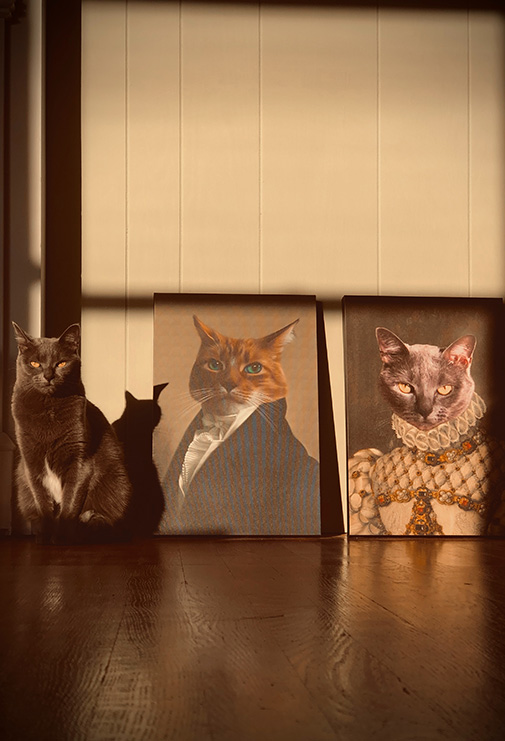ISABELLA AND FERDINAND
On the right here is my great (times seventeen) grandmother, Isabella. You will note the remarkably close family resemblance, given the two and a half centuries that separate our years of existence. The portrait nearest to me is of Isabella’s husband, Ferdinand. Not so much of a likeness I think you’ll agree. Isabella and Ferdinand were the personal property of the Holy Roman Empress, Maria Theresa, the 13th representative of the House of Habsburg to hold that position and, de facto, the ruler of a vast swathe of Europe following her succession in 1740. With all that ruling to be taken care of together with the no small matter of giving birth to sixteen children (thirteen of whom survived beyond infancy) you might think it surprising that Maria Theresa found time for pets. But you might also allow that the poor woman was sorely in need of some form of light relief. Obviously, there were specifically designated servants who took care of all of Isabella and Ferdinand’s day-to-day necessities as well as certain special demands made by the Empress. The latter would generally involve dressing the couple up in elaborate outfits, as specified or even designed, by the Empress herself. Maria Theresa was always most assiduous in ensuring that the costumes created were fully accurate in terms of historical detail. We can safely assume therefore that these two portraits were not painted at the same time. Isabella’s dress could have come straight from the wardrobe of Queen Elizabeth the First of England whereas Ferdinand’s get-up looks pretty much in line with the fashions of the late 18th century. According to some reports from the time, the weekly display of feline fancy dress was the highlight of Maria Theresa’s week. She certainly didn’t derive much joy from her relationship with her own husband, Francis. Whilst she was perpetually either pregnant or dealing with the results of pregnancy, Francis was pursuing the time-honoured royal male pastime of serial adultery. Although the historical records are not quite so detailed in their case, it appears that the union of Isabella and Ferdinand followed something of a parallel trajectory. At least it did for the first several years of their marriage.

